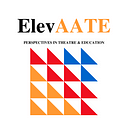The Power of Theatre in Transforming Disability Culture
By Catherine R. Palmore

Introduction
Theatre is a powerful tool for promoting art and culture in society. This collaborative form of performing arts brings the community together in creative ways as artists present fictional and real experiences before an audience. As an artistic expression, theatre functions as an influential tool that empowers individuals, especially people with intellectual and developmental disabilities.
Organizations like ArtStream are key players in the industry. Artstream is an inclusive nonprofit theatre company that provides performing opportunities for adults with intellectual and developmental disabilities. Witnessing the actors make creative choices, develop original theatre productions, and connect with new friends is truly transformative. The power of performance helps the actors in many ways — from increasing representation of people with disabilities in the creative industry to improving their confidence and teaching social skills. When educators create a safe space where everyone is valued for their creative contributions, real magic transpires.

The history of disability theatre
The matter of theatre and disability is significant globally with a strong historical presence. Its roots go back to the disability arts and culture movement in the 1980s in the United States and the United Kingdom. The movement gathered and expressed the frustrations of people with disabilities due to their marginalized status in the arts and culture sectors across many countries.
In the United States alone, people with disabilities represent the largest minority group making up 20% of the country’s population. More alarming is that 95% of disabled characters are played by non-disabled actors. To date, their participation in theatre was challenged by society which makes it highly relevant to understand how theatre can help people with intellectual and developmental disabilities in a multitude of ways.

Personal and societal impact
For one, diverse casting in theatre increases the representation of this historically marginalized group by providing inclusive opportunities. First, casting and training people with disabilities to play a character with disabilities helps change the stigma attached to disability as a whole. When discussing the narratives of people with disabilities, disability culture refers to the thoughts, actions, ways of being, and visibility they experience. Despite limited representation in the media and acknowledgment from the press, people with disabilities are making waves in the performing arts.
In 2015, Ali Stroker made history as the first person to act on a Broadway stage in a wheelchair. She also won a Tony Award and continued her acting career, inspiring many other women like her and the disability community at large. Secondly, such representation impacts people on a personal level. Including people with disabilities in theatre fights exclusion and helps increase one’s self-image and self-esteem, creative skills, ways of expressing themselves, and teaches them how to make new friends and maintain old and new relationships.
Ultimately, creating a safe space to encourage such skills will help people with disabilities work on their independence and increase their emotional self-sustenance and self-advocacy.

Case studies: promoting inclusion in performing arts
Many initiatives across the United States support artists with disabilities to perform in theatre. For example, Blue Apple is a creative company in the U.K. that provides opportunities in the arts for people with learning disabilities. In January 2022, it created the Young Company for Performing Arts for young people aged 14 to 18. Professionals give online sessions for singing, dancing, and drama in a fun and nurturing environment.
Similarly, in the United States, ArtStream practices building an inclusive and creative space for adults with intellectual and developmental disabilities to enhance their quality of life and develop social skills. It focuses on developing independence and social learning to create an interconnected community. In the Theatre Companies, the actors collaborate to write and perform an original musical. The process involved voting on a theme, working with the director to create characters, and improvising scenes. The scenes are then scripted to become an original one-act musical to perform in front of a live audience.
Lastly, the New York-based National Disability Theatre hires artists with disabilities for fully accessible and world-class theatre to ultimately impact social policy about disability culture. These organizations and many more help foster a brave and creative theatrical space free from judgment and oppression.

Conclusion
The inclusion of artists with disabilities in performing arts promotes equality. Just as able-bodied children and adults have the opportunity to participate in drama, acting, and performing, children and adults with disabilities must have access to the same opportunity. It shows that everyone has the right to participate in different sectors of society and encourages personal development and growth. By using the power of imagination, storytelling, and expression as a tool, new opportunities for learning and collectivism are possible for disability communities in any society.
Catherine R. Palmore, Ed.D. is a recent graduate of Baylor University’s Learning and Organizational Change program. Her dissertation explored the role the fine arts play in university students’ development of 21st century skills. She received an M.S. in Strategic Design and Management from Parsons School of Design, a B.A. in Theatre Arts from Virginia Tech, and a Women in Leadership certificate from Cornell University. Her research interests include interdisciplinary arts integration, design thinking, and visual culture.
Sources for Statistics
- National Disability Theatre — https://nationaldisabilitytheatre.org/mission-1
- Disability Funders Network — https://www.disabilityfunders.org/disability-stats-and-facts#:~:text=People%20with%20disabilities%20constitute%20the%20largest%20minority%20group%20in%20the,percent%20of%20the%20total%20population
Now it’s your turn! What do you think? Comment, react, share.
